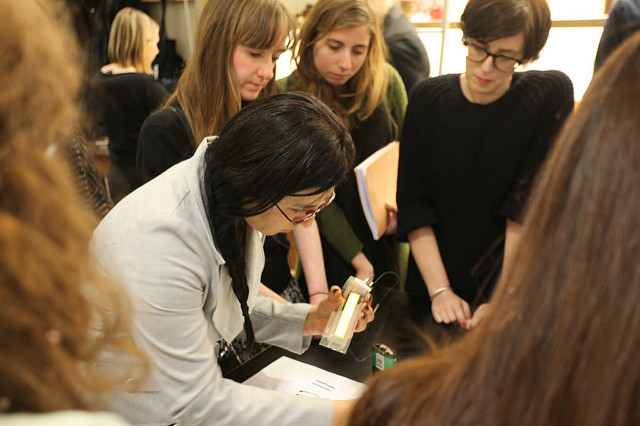Designing With New Materials

Designers play a very important role in choosing the materials that define our clothes, products and cities, creating products that please or disappoint users and touch them emotionally in some way. Increasingly, in the context of design-led materials research projects like Light.Touch.Matters, designers are even able to define and direct the materials that are produced in research laboratories (Wilkes et al. 2016).
Designers therefore increasingly define our experiences of new materials: what they do, what they express to us, what they elicit from us, and what they make us do. As Karana et al. (2015) discuss, when designing with new materials, you will be faced with one of three scenarios:
- a relatively well-known material, which is accompanied by a fully developed sample.
- a relatively unknown material, which is accompanied by a fully developed sample.
- a semi-developed or theoretical material, where no sample, or only exploratory samples, exist.
If you would like to read more, the papers mentioned above can be found in the Further Reading section. Otherwise, move on to Task 1.
Task 1
Materials Scientist(s): Explain to the Designer(s) whether your material is well-known, fully developed or semi-developed.
Designer(s): If designing with a semi-developed material, discuss how you might overcome this obstacle by using analogous technologies to prototype, benchmark and tinker with.
For further information about tools and strategies that can be used to support designers working with novel materials, see Barati et al. (2015) and The White Book (2016, pp. 35-36).
Task 2
All: Arrange for the other to experience your day-to-day working environment (e.g. join you in the lab for a day or take part in one aspect of the design process).
To read more about designing with new materials see The White Book (2016, pp. 18-20).

